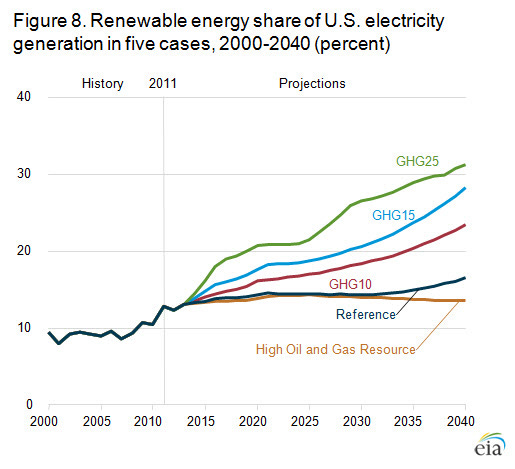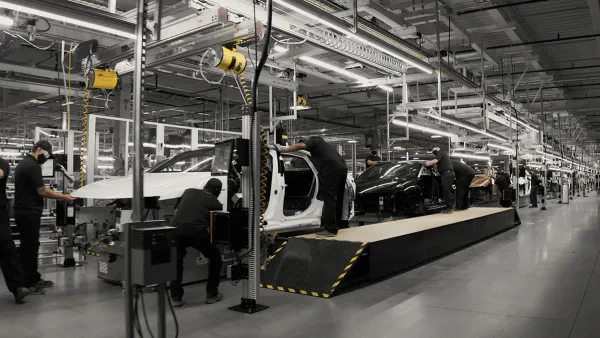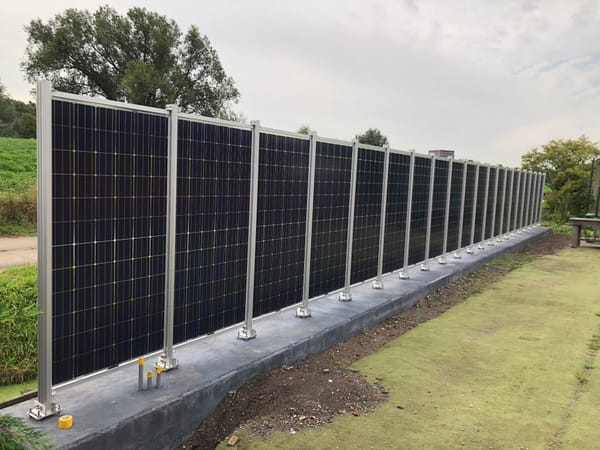Five market-driven reasons for conventional conservatives the American economy is going green
Good Afternoon!
Last Saturday evening I attended a group dinner where most of the attendees were captains of Midwest Industry in one way or another. While I wouldn’t classify most of them as “climate deniers”, as people learned about my climate-journalism interest I mostly got back a great deal of climate nihilism and general conservative resistance: “We’ll never stop using fossil fuels,” was a theme I heard a lot of.
All of these folks, corporate attorneys, real estate magnates, and large manufacturing managers, pushed hard against the idea that there’s a real, green energy transition underway and instead posited that while there may be a growing climate emergency, the American economy just isn’t ready or capable of responding to climate change.
As I talk to people outside of the green/climate/liberal orthodoxy, I’m finding that most Americans fall into this space: Sure, there’s a growing problem, they say, but the national economy just isn’t responding to it. The average ideology on climate is conservative, I believe. Not for any political reason, but just because the enormity of climate change pushes us all to be nihilistic in the first place, and also because unless you’re regularly examining the political-economic state of America, it’s hard to actually see the massive change underway. Even for those driving electric cars today, it’s hard to see the change.
I often remind myself that I stood in line to buy an original iPhone in 2007. Even when I finally held my purchase, I couldn’t imagine how much the world would change as a result within five years.
Anyway, the fierce flow of cocktails and dinner chatter slowed my brain from adequately answering my dinnermate’s doubts. So, here I soothe my sense of inadequacy and provide you with useful tools in case you stumble into such a situation.
-Mike

Five market-driven reasons for conventional conservatives the American economy is going green
- Most predictions of green technology advancement have been too pessimistic
Ten years ago, the Energy Information Administration, the federal government’s independent energy analysts, long considered the gold standard of energy predictors, saw little chance that renewables’ market share would grow. In fact, the mainstream thinking at the time was so off-base, it basically measured renewables’ market chances against possible carbon credit taxes on oil and gas, rather than the possibility of green tech becoming cheaper and more efficient.
Today, solar and wind production prices are considerably less than coal and expected to undercut methane gas turbine costs within the decade.
Take a look at these two charts. The top one, from EIA’s 2013 Annual Energy Outlook, the bottom from EIA’s June 2023 Monthly Energy Review. By this measure, American renewable capacity is blowing through some of the best scenarios imagined for renewables ten years ago – despite the lack of an American federal carbon credit program.


- The market war underway for EV metals has drawn lots of capital, with much more to be committed
Last week I wrote about how a global race has kicked off to lock up metals needed for electric vehicles. The geopolitical struggle for market dominance in EV metals between American, European, and Chinese companies involved many multi-billion dollar supply chains. For instance, prices for lithium, which is a key component in EV batteries, are running around $24,000 a ton, global refined lithium demand is expected to double to over 100,000 tons a year in 2024, already making it a $24 billion industry. Cobalt, copper, graphite, and nickel are undergoing similar explosive growth.
- Every major car company has committed to switching their entire supply chain to EVs
PriceWaterhouse Cooper compared the complexity of an electric motor to a four-piston engine and found the electric motor needed 4 moving parts while the engine required 110. The vast resources auto manufacturers have long committed to producing engines, transmissions, and exhaust systems aren’t applicable to EV cars, and yet consumer interest in buying EVs is growing fast.
Because EVs are so different from Internal Combustion Engine (ICE) vehicles, it is extremely difficult for an auto manufacturer to split resources between the two. Growing consumer pressure, and pressure from outsiders like Tesla and Rivian, is forcing the auto majors to devote scarce resources to developing competitive EVs rather than ICE vehicles. Already, Ford, GM, and Stellantis have started the process of gradually eliminating ICE production capacity, only to replace it with EV plants.
Before the end of the decade, buying an ICE will be like buying a stick shift: Remaining ICE consumers will be pushed to EV purchases because EVs will be more economical, with more options.
- Insurance companies are already betting on the growing cost of climate change
From a personal perspective, insurance is a necessary hassle. But from a macro economic perspective, it’s the force that makes the world go around. Consider this: Home insurers are pulling out of California and parts of Colorado because the risk of wildfire is too high. Recurring hurricane flood damage expenses are also forcing insurers to also pull out Louisiana and Florida. The common theme we have in all of those places is sprawl. Housing developed in once open, natural areas, far from urban centers.
Insurers are increasingly unwilling to pay for Americans to build homes, driving the cost of owning an exurban house up, while simultaneously decreasing the value of such a house. It turns out that dense, walkable communities are more climate sustainable, cheaper to live in, and therefore becoming more desirable to live in.
- The plunging cost of renewables has already created relentless market and domestic political pressure
The tired, old line is that renewable energy is a hippy, Californian dream. The new reality is that Texas’ unregulated business landscape has turned it into the biggest solar and wind producer in the country. Even old-line Eastern harbor towns are getting revved up by the green tech boom – all because solar and wind production costs have dropped through the floor so that they’re cheaper than all coal and some methane gas facilities.
The result is that fossil fuel advocates and utility companies are fighting a losing, rear-guard battle to hold off the ascendant market power of renewables. The teeth gnashing and “rolling coal” of the fossil industry is the same kind of stuff we saw from buggy manufacturers and whale ship captains. They can complain, or jump on board to green tech where the real money is being made.
Other Things Happened
- Proposed new rules from the Department of Transportation would raise fuel efficiency requirements for gasoline-powered vehicles from 49 mpg in 2026 to 58 mpg by 2032, with tougher standards for pickups and SUVs.
- After 102 years, the U.S. government is finally raising fees for oil and gas wells on federal lands.
Welcome to the bottom of the newsletter! This brief cartoon is an all too real summer story.
Thank you for reading Heat Rising. This post is public so feel free to share it.





